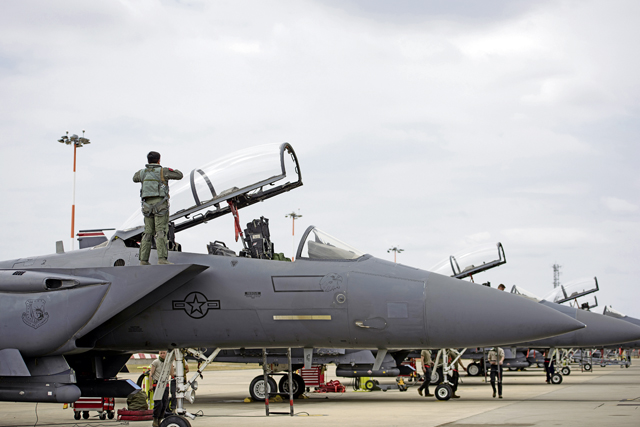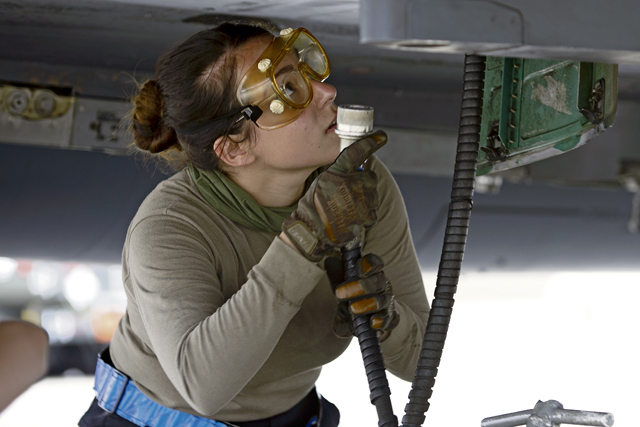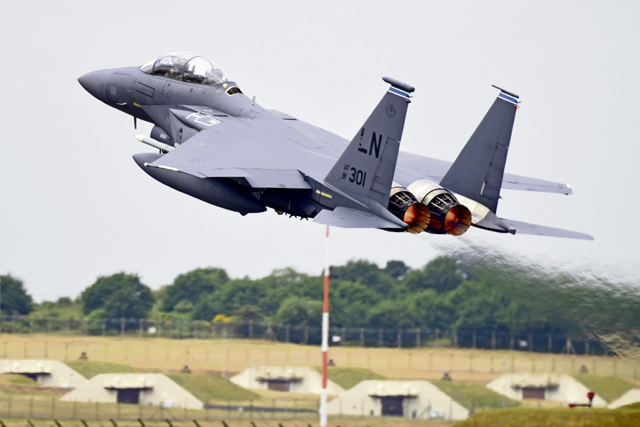ROYAL AIR FORCE LAKENHEATH, United Kingdom (AFNS) — Multiple Airmen attached to Europe-wide fighter wings participated in a large-force exercises, or LFE, within the North Sea airspace, May 27. Participants included the U.S. Air Force F-15 Strike Eagles assigned to the 48th Fighter Wing, RAF Lakenheath; F-16 Fighting Falcons assigned to the 31st Fighter Wing at Aviano Air Base, Italy; F-16s assigned to the 52nd Fighter Wing at Spangdahlem AB, Germany; KC-135 Stratotankers assigned to the 100th Air Refueling Wing at RAF Mildenhall; and NATO E-3 Sentry, or AWACS, from Geilenkirchen AB, Germany.
During the LFE, aircrew conducted Dissimilar Air Combat Training in order to enhance combat readiness and increase tactical proficiency, which are needed to maintain a ready force capable of ensuring the collective defense of the NATO alliance.

The purpose of the exercise was to continue high-end training with U.S. Air Forces in Europe and NATO partners to counter threats in the area of responsibility, according to Capt. Nathan Hartoin, a 493rd Fighter Squadron pilot and 48th FW chief of weapons.
“Large-force exercises allow us to validate and enforce important tactics that are tested at many of the major exercises that occur around Europe and the United States,” he said. “The North Sea airspace allows fourth-to-fourth generation fighter integration on a large scale and is one of the best around for simulated air-to-air engagements.”

Hartoin said the LFE planning process is complex and begins when commanders determine the need for a training event. Once interest in an exercise is established, a date is set based on tanker availability, training phases for each unit and base, and airspace availability.
After projecting a date, exercise planners focus on the finer points, such as the exercise scenario, fuel requests and the exercise timeline, he said. For this LFE, each unit was given specific tasks to complete, and the 48th FW coordinated the effort.

“The aerial refueling provided by the 100th ARW was vital in showing the capability to execute long range defensive counter air,” Hartoin said. “With this in mind, the tanker plan was the primary detail that was constantly adapted all the way through execution.”
Exercises of this nature are not new for U.S. Air Force units assigned to U.S. Air Forces in Europe-Air Forces Africa, but with the current COVID-19 crisis, participating units have identified a way to integrate multiple assets and ensure combat readiness for the collective defense of the NATO alliance.


